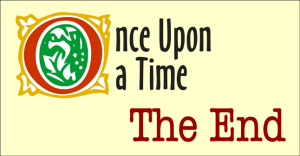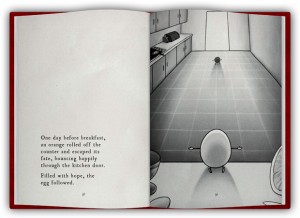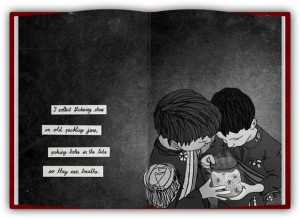Throughout the subject Children’s Literature in English, we are getting closer to infant literature. Concretely, during these last weeks, we took interest to nursery rhymes, chants, finger plays, the art of storytelling, infant English authors… If we think about the hidden objective of these kind of activities, this could be to learn the different techniques that make possible that our future students consume and produce literature having fun.
To contribute to this aim, I want to present you through this post, another way to enjoy with literature. I am referring to micro stories, also known as micro tales, micro fiction, flash fiction… In order to have a more clear idea about micro stories, it is useful to read some definitions about this term. For instance, Mac Millan Dictionary website defines them as “a style of literature in which stories are extremely short and often consist of less than 300 words”. Meanwhile, MicroStory website explains that “a MicroStory has no limits but length. A MicroStory must be 499 words or less. That is all”.
First image
Nevertheless, this is not something new for us. During the first year, in the subject Desarrollo de las Habilidades Comunicativas, the teacher taught us micro tales, concretely, he talked about a school where students wrote their own micro tales. He told us a Spanish micro tale that a girl of primary education created:
I do not exactly the reason why that moment was amazing for me. Maybe it is true that the best perfumes come in small bottles. Since that moment I understood, that micro tales could be a great and innovative tool to develop literature activities with our students.
In this sense, it is really interesting the lesson plan that Brown and Schulten (2013) propose to read and to write micro stories with students. An example could be the warm-up activity, where the teacher has to write in the blackboard the following micro tale, attributed to Ernest Hemingway:
Then, the teacher asks them to consider whether or not they think it is a story. Once students have had time to reflect on it, they can discuss with their peers about it.
Another great possibility to work micro tales is Twitter, where students can create their own flash fiction. Due to the fact that on Twitter, we have a limited number of characters to write each tweet, it is quite easy to develop good micro stories. A great model is @themicrostories.
Finally, I would like to stand out The tiny book of tiny stories, a book created throughout the collaboration of many flash fiction authors. Right after, there are some micro stories belonging to the book.
Second image
Third image
If you are interested in micro tales I recommend you to research the following websites and articles.
http://www.microstory.com/definition.php
https://www.guernicamag.com/fiction/epstein_5_15_11/
https://goldbot.wordpress.com/category/prose-2/micro-tales/
http://www.sixwordstories.net/
https://twitter.com/microcuentos
http://www.brainpickings.org/2011/12/13/the-tiny-book-of-tiny-stories/
https://www.youtube.com/watch?v=wLQAqAhrDPY
Brown, A. and Schulten, K. (2013). Short and Sweet: reading and writing flash fiction. Retrieved from http://learning.blogs.nytimes.com/2013/10/03/short-and-sweet-reading-and-writing-flash-fiction/?_php=true&_type=blogs&_r=0
First image from http://www.tericrosschetwood.com/why-i-hate-flash-fiction/
Second and third images from http://www.brainpickings.org/2011/12/13/the-tiny-book-of-tiny-stories/



Hi Ali! I really liked your post because I looove MicroStories First of all congrats and thanks for all the information you included about them, apart from the examples and useful websites that are attached.
I strongly agree with you in the fact that it is a wonderful tool, which I consider schools should make the most of. The reasons why I think so are the following:
– The first reason has to do with the definition (really appropriate in my opinion) you cited of MicroStory, which is provided by MicroStory website: “a MicroStory has no limits but length”. It is a tool with infinite possibilities: it can be used to deal with thousand of topics, and everyone is able to understand and create one. Both things are great.
– Related to the last things I mentioned above, according with the understanding aspect, I consider that analyze and discover the underlying meaning of some MicroStories is something great to develop their critical thinking. On the other hand, related with the creative aspect, apart from being awesome to work different HOTS –High Order Thinking Skills-, someone might think that it could be a little bit frustrating for those students who haven’t developed their creativity yet. However from my point of view, I see MicroStories creation as a perfect occasion to work on it. Besides, everyone can shine in his/her own way.
– As you well said, MicroStories can also entail a brilliant opportunity to bring students closer to the ICTs field, in which there are fantastic tools through which these stories can be originally shared or presented. In fact, I discovered them through the website you talked about, Twitter. There are also another webs which could be more secure for children, as the one that Matthew (teacher from another subject) present to us: “TodaysMeet”. On it, the teacher is the one who created the space for sharing, and students can only write messages of 140 characters. In spite of this, they can also elaborate them without using ICTs but continue with innovative supports, for instance using post-its.
– Finally, nowadays there is also a new trend of presenting them included in pictures. So they can be taken into account in case we want to work with Multiple Intelligences. Here I leave you my favourite one:
https://www.google.es/search?q=i+always+wonder+why+birds+stay+in+the+same+place+when+they+can+fly&espv=2&biw=1920&bih=979&tbm=isch&imgil=LNYGSj2YISI3JM%253A%253BYLZuz6F3fnzQcM%253Bhttp%25253A%25252F%25252Fiamcimoonnn.blogspot.com%25252F2012%25252F11%25252Fwhy-birds-stay-in-same-place-when-they.html&source=iu&pf=m&fir=LNYGSj2YISI3JM%253A%252CYLZuz6F3fnzQcM%252C_&usg=__S3DCjvMeEf4rPFgDxGZ59tJKgOc%3D&ved=0CCwQyjc&ei=CbFTVLrIKqnksASuuYCwCg#facrc=_&imgdii=_&imgrc=LNYGSj2YISI3JM%253A%3BYLZuz6F3fnzQcM%3Bhttp%253A%252F%252F2.bp.blogspot.com%252F-gVgsVeEjh84%252FUK8Qbab6mZI%252FAAAAAAAAAPQ%252FcQ5f14PJadY%252Fs1600%252Ftumblr_mdxamhwhIZ1qbrjfso1_500_large.psd.jpg%3Bhttp%253A%252F%252Fiamcimoonnn.blogspot.com%252F2012%252F11%252Fwhy-birds-stay-in-same-place-when-they.html%3B500%3B575
P.D.: As my mother usually said to me, Best perfumes come in small bottles, for sure, but be careful and don’t forget that poison too.
Hello Azu! Thank you very much for your comment. I am really glad about you liked the post. In any case, just because I know you a little bit, it does not surprise me a lot that you love that topic, that is, you adore tinny and cute things.
It is true that micro stories are a magnificent resource. I absolutely agree with you about these elements let us deal with thousands of topics and that anyone can create fast fiction. Because of these reasons, it can be deduced that micro stories can be really motivating. More in detail, it is fantastic that you realized about micro stories can be great in education, in order to develop students critical thinking, creativity, multiple intelligences… Thank you for your ideas about ICTs, concretely, TodaysMeet is absolutely a more favorable option than Twitter.
Finally, although I did not know the micro story that you showed us, I have to confess that, from now on, it will be one of my favourite ones.
P.D.: I will bear in mind that also poison comes in small bottles